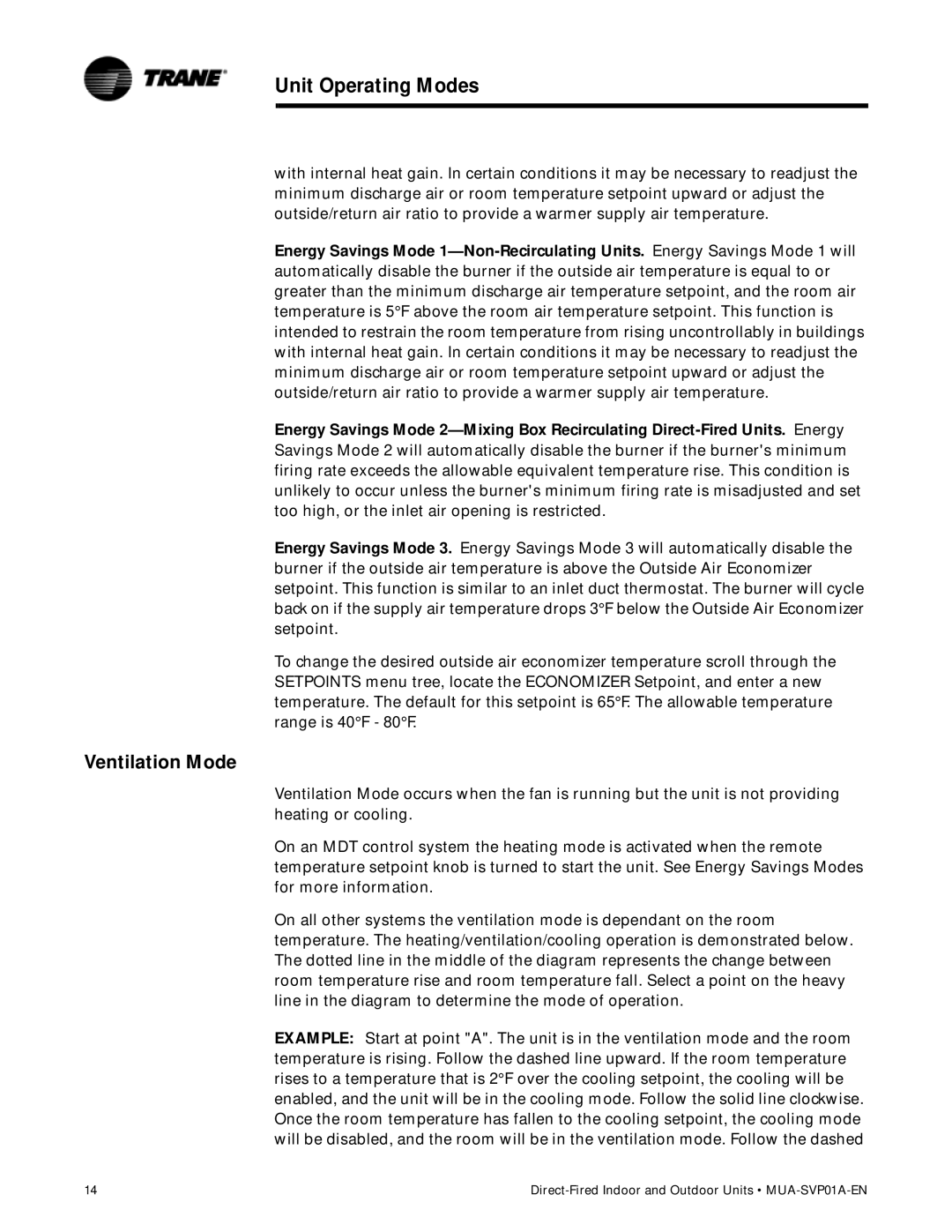Unit Operating Modes
with internal heat gain. In certain conditions it may be necessary to readjust the minimum discharge air or room temperature setpoint upward or adjust the outside/return air ratio to provide a warmer supply air temperature.
Energy Savings Mode
Energy Savings Mode
Savings Mode 2 will automatically disable the burner if the burner's minimum firing rate exceeds the allowable equivalent temperature rise. This condition is unlikely to occur unless the burner's minimum firing rate is misadjusted and set too high, or the inlet air opening is restricted.
Energy Savings Mode 3. Energy Savings Mode 3 will automatically disable the burner if the outside air temperature is above the Outside Air Economizer setpoint. This function is similar to an inlet duct thermostat. The burner will cycle back on if the supply air temperature drops 3°F below the Outside Air Economizer setpoint.
To change the desired outside air economizer temperature scroll through the SETPOINTS menu tree, locate the ECONOMIZER Setpoint, and enter a new temperature. The default for this setpoint is 65°F. The allowable temperature range is 40°F - 80°F.
Ventilation Mode
Ventilation Mode occurs when the fan is running but the unit is not providing heating or cooling.
On an MDT control system the heating mode is activated when the remote temperature setpoint knob is turned to start the unit. See Energy Savings Modes for more information.
On all other systems the ventilation mode is dependant on the room temperature. The heating/ventilation/cooling operation is demonstrated below. The dotted line in the middle of the diagram represents the change between room temperature rise and room temperature fall. Select a point on the heavy line in the diagram to determine the mode of operation.
EXAMPLE: Start at point "A". The unit is in the ventilation mode and the room temperature is rising. Follow the dashed line upward. If the room temperature rises to a temperature that is 2°F over the cooling setpoint, the cooling will be enabled, and the unit will be in the cooling mode. Follow the solid line clockwise. Once the room temperature has fallen to the cooling setpoint, the cooling mode will be disabled, and the room will be in the ventilation mode. Follow the dashed
14 |
|
